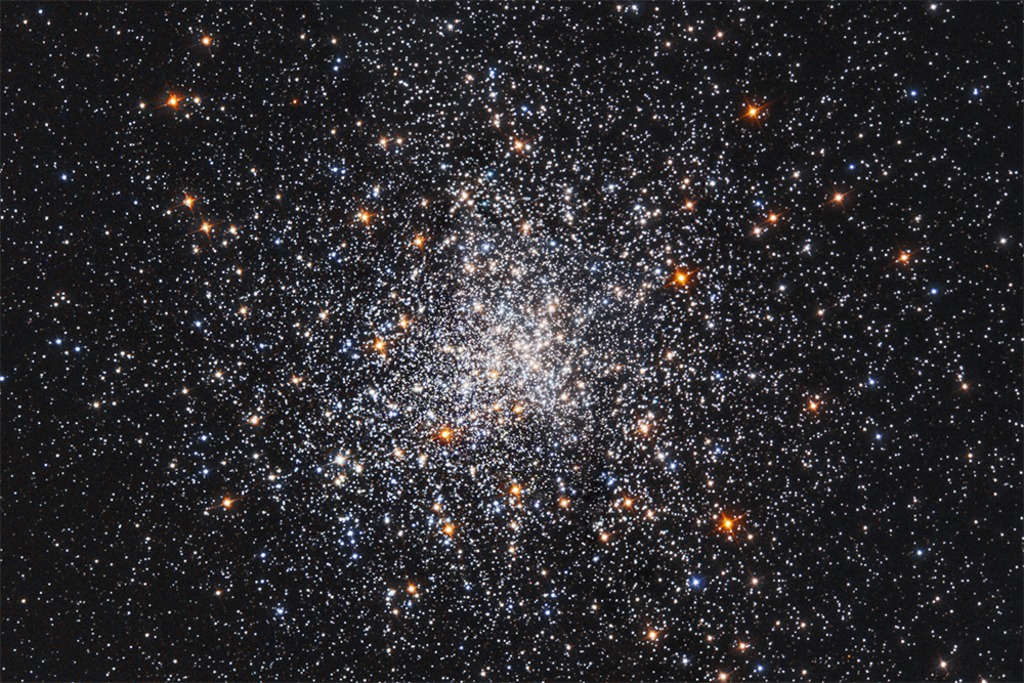The Sombrero Galaxy from Hubble

The majestic Sombrero Galaxy as observed by Hubble
NASA's Hubble Space Telescope has trained its razor-sharp eye on one of the universe's most stately and photogenic galaxies, the Sombrero galaxy, also known as Messier 104 (M104). The galaxy's hallmark is a brilliant white, bulbous core encircled by the thick dust lanes comprising the spiral structure of the galaxy. This brilliant galaxy was named the Sombrero because of its resemblance to the broad rim and high-topped Mexican hat.
As seen from Earth, the galaxy is tilted nearly edge-on. We view it from just six degrees north of its equatorial plane. The Sombrero galaxy is 50,000 light-years across and is located 28 million light-years from Earth, at the southern edge of the rich Virgo cluster of galaxies.
Hubble easily resolves M104's rich system of globular clusters, estimated to be nearly 2,000 in number - 10 times as many as orbit our Milky Way galaxy. The ages of the clusters are similar to the clusters in the Milky Way, ranging from 10-13 billion years old. Embedded in the bright core of M104 is a smaller disk, which is tilted relative to the large disk. X-ray emission suggests that there is material falling into the compact core, where a 1-billion-solar-mass black hole resides.
The Hubble Heritage Team took these observations in May-June 2003 using three filters (red, green, and blue) to yield a natural-color image. The team needed six Hubble pointings to cover this magnificent galaxy whose apparent diameter is nearly one-fifth the diameter of the full moon.
For More Information
Credits
Please give credit for this item to:
NASA and The Hubble Heritage Team (STScI/AURA)
-
Project support
- Mark Malanoski (Global Science and Technology, Inc.)
- Frank Summers (STScI)
Release date
This page was originally published on Monday, February 27, 2017.
This page was last updated on Tuesday, November 14, 2023 at 12:34 AM EST.

